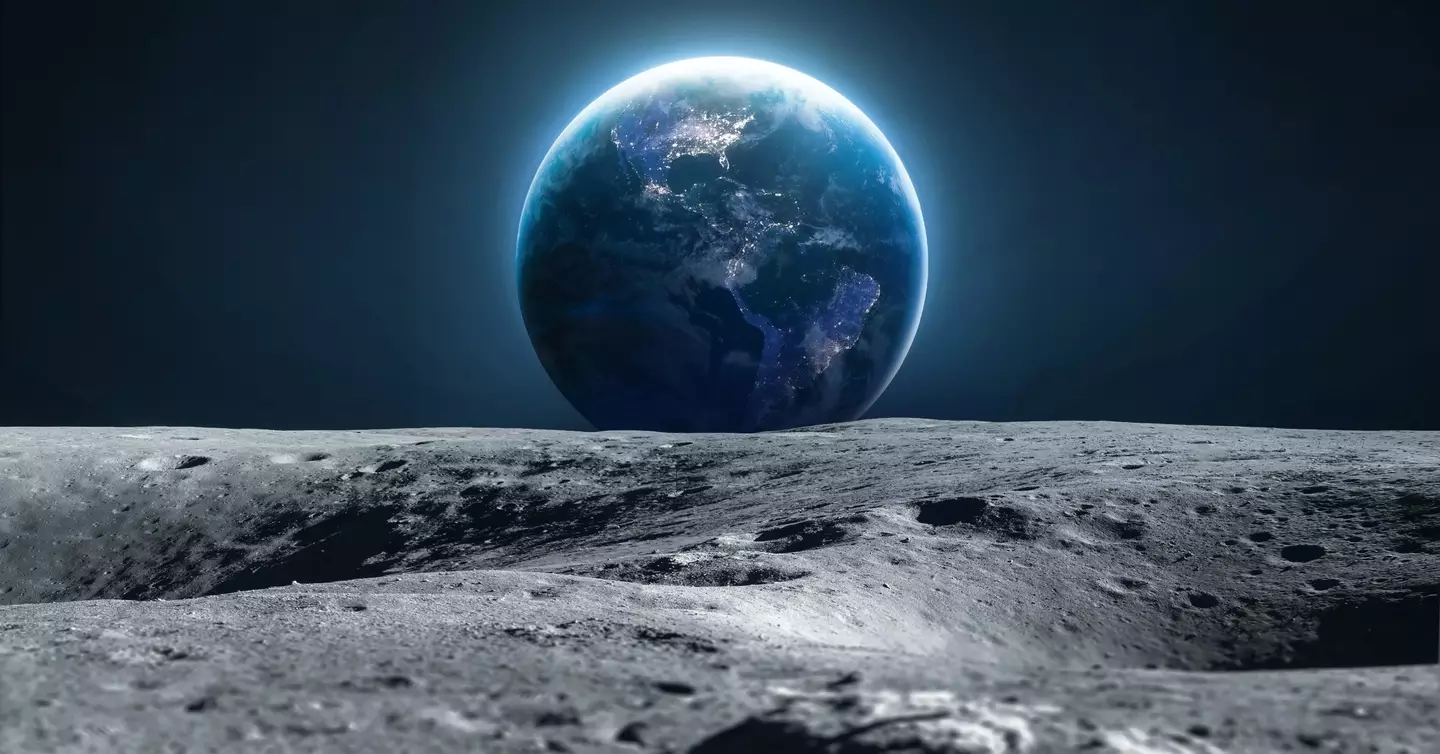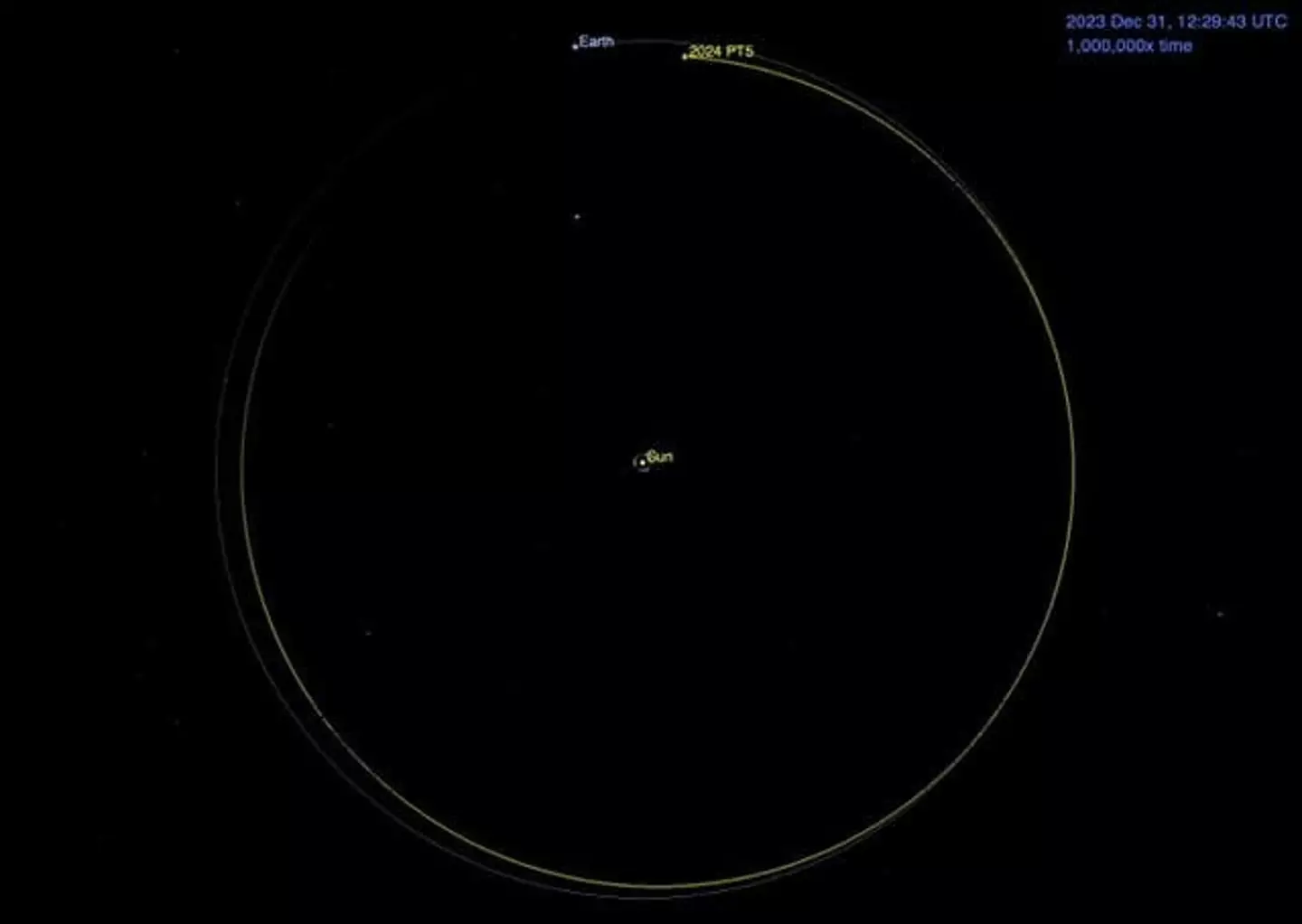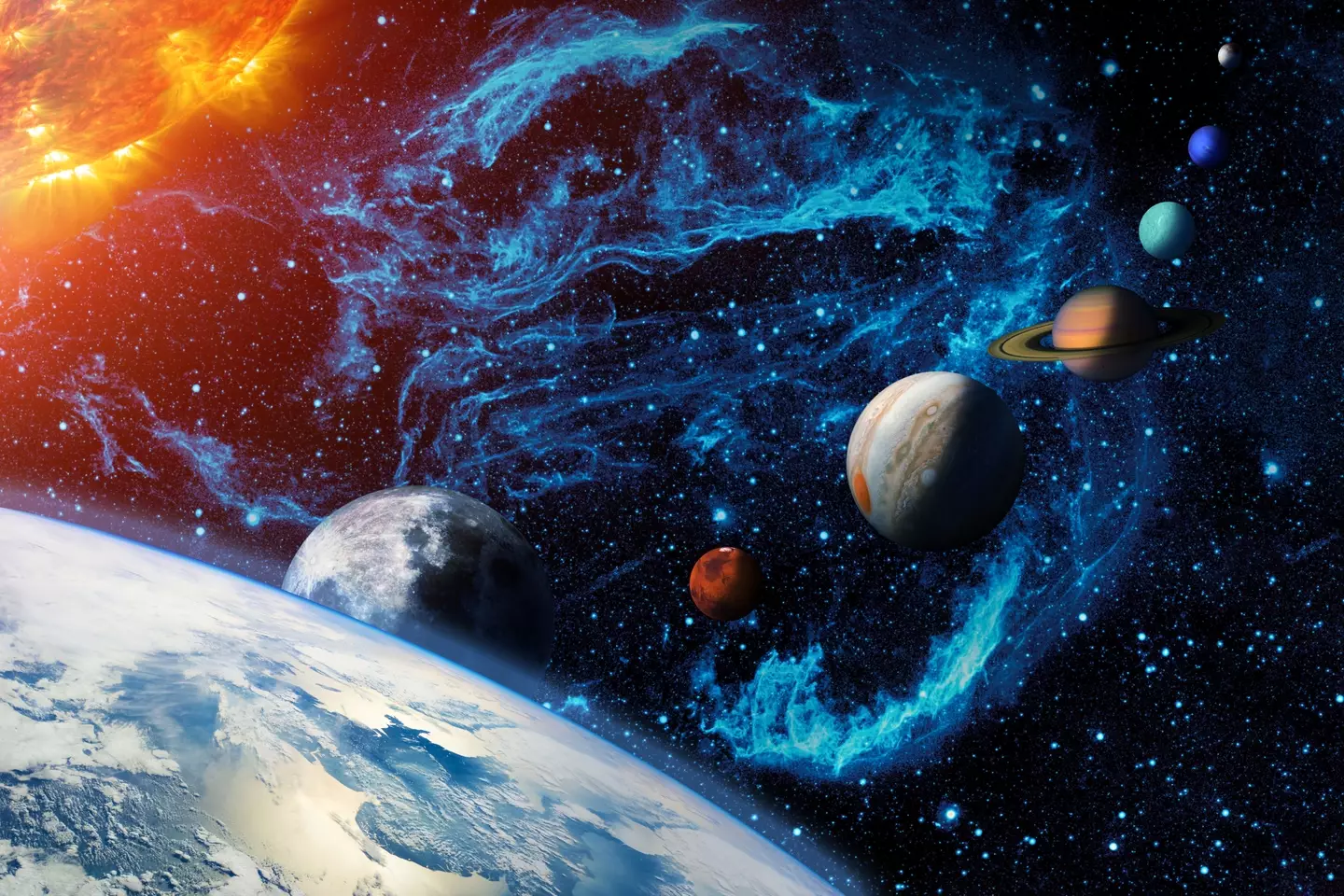NASA’s global defence system used to detect potentially hazardous objects heading towards Earth has located an asteroid heading for our planet.
Dubbed COWECP5 by scientists monitoring the space rock, it is set to enter Earth’s atmosphere shortly after 4pm today (3 December).
Thankfully the rock is tiny – just 27 inches wide, to be precise. But despite its size, the asteroid is still set to light up the skies when it enters the atmosphere.
Sadly, it won’t be visible for many, with the European Space Agency (ESA) predicting it to burn up over the skies of Siberia in northern Russia.
This will happen at 11.15pm local time, which is 4.15pm GMT. Those within a few hundred kilometres of the entry point should be able to see a ‘very bright fireball’ light up the sky.
The Asteroid Terrestrial-impact Last Alert System, designed and used by NASA and affectionately dubbed ATLAS, spotted the potential threat.
ATLAS can spot asteroids up to one week before they arrive on Earth, giving scientists time to respond if necessary.

With COWECP5, the asteroid was spotted by ATLAS just seven hours before it was going to hit Earth.
The Kitt Peak National Observatory, funded by NASA, also tracked the asteroid early on Tuesday.
Richard Moissl, the head of planetary defense office with the ESA, said the Kitt Peak system had calculated the asteroid’s ‘impact corridor’.
Professor Alan Fitzsimmons, at Queen’s University Belfast, said the ability to detect this asteroid shows that humanity’s ability to protect itself from objects in space is getting stronger by the year.
“It’s a small one, but it will still be quite spectacular,” Fitzsimmons said. “It will be dark over the impact site and for several hundreds of kilometres around there’ll be a very impressive, very bright fireball in the sky.”

The first ever asteroid to be monitored being hitting Earth was tracked back in 2008. As a result, parts of the rock were recovered by scientists to study.
Fitzsimmons explained: “The beauty there was that the reflectivity of the meteorites exactly matched the reflectivity as measured by telescopes before it hit, showing you that really nice direct link between what we saw out there in space and what we then found later on, on the ground.”
The ATLAS system used to track this asteroid uses four telescopes that are dotted across the globe.

The International Space Station has been forced to take urgent evasive action to avoid a huge piece of space junk that could have ripped through it if contact had been made,
Known commonly as the ISS, the space station has been created over the last 26 years through a collaborative effort between NASA (USA), Roscosmos (Russia), ESA (Europe), JAXA (Japan), and CSA (Canada).
Orbiting the Earth more than 15 times a day, it is the largest space station ever built by humanity at a cost of $150 billion (£120 billion).
But the project was put at risk last week due to a piece of debris from a defunct weather satellite hurdling its way towards the space station.
It is yet another example of how the Kessler syndrome could eventually come true if humanity doesn’t find an alternative path forward, with space junk having the possibility of changing humanity ever – and for the worse.
As a result of the looming object coming uncomfortably close to the ISS, the team on board – including stranded astronauts Sunita Williams and Barry Wilmore – performed a carefully executed manoeuvre to make sure the space station was not left with a huge hole smashed through it as a result of the piece of defunct satellite.
Key to the execution was the Progress 89 spacecraft, a Russian spaceship which regularly supplies the ISS with cargo and resupplied goods.

In a procedure lasting five minutes and 31 seconds, Progress used its thrusters to push the ISS and altering its orbit and flight path around the planet to ensure its safety and the safety of those on board.
NASA officially said it was needed ‘to raise the orbit of the International Space Station to provide an extra margin of distance from a piece of orbital debris from a defunct defense meteorological satellite that broke up in 2015’.
If the manoeuvre had not been taken, NASA experts reckoned the space debris would have come within two and a half kilometres of the ISS – which is incredibly close in space terms.
The Progress 89 spacecraft had been at the ISS since August, delivering almost three tonnes of food, fuel, and supplies to the crew on board.
Talk has now turned to the Kessler syndrome and how this might become humanity’s reality as space becomes more and more cluttered.

“Spent rockets, satellites and other space trash have accumulated in orbit increasing the likelihood of collision with other debris,” NASA said in 2016.
“Unfortunately, collisions create more debris creating a runaway chain reaction of collisions and more debris known as the Kessler syndrome after the man who first proposed the issue, Donald Kessler.”
In 1978, Kessler said that it would take 30 to 40 years to reach ‘critical mass’; the point where collisions begin, even if no more objects are put into orbit.
Given that 40 years after was 2018, it is leaving some a little uncomfortable in their seats.
Hope in stopping the Kessler syndrome from taking a hold includes recycling space debris and recommissioned satellites.
The European Space Agency says it wants to become ‘debris-neutral’ by 2030, by which it means ‘adding zero net debris to the Earth orbital environment’, with a larger aim to reuse parts by 2050.

At more than 220 kilometres across, the huge chunk of rock is worth roughly £8 quintillion. Which is obviously an absolutely insane amount of money.
It’s because the object is full of incredibly useful materials that, back on Earth, could help humanity in all kinds of ways.
We’re talking platinum and palladium, which are essential to the production of cars and electronic goods.
Now US space agency NASA has used Elon Musk’s SpaceX to probe the asteroid, which is called 16 Psyche after being first discovered back in 1852 by Italian astronomer, Annibale de Gasparis.
Using SpaceX’s Falcon Heavy rocket, it sent its Psyche spacecraft in the direction of the asteroid back in October 2023.
It is now well on its way, having travelled a year through space.
The Psyche spacecraft will not reach 16 Psyche until August 2029, with it 391 million kilometres from Earth. And even then, it is only orbiting, rather than landing.

But in doing this, the hope is that it will be able to fully understand what the asteroid is made of, with it thought to be made up of somewhere between 30 percent and 60 percent of metal.
With the asteroid worth a reported £8,000,000,000,000,000,000, and the human population sitting at around 8.025 billion people, every person could get the equivalent of just under £1 billion each.
If we’re talking specifics, it would be around £996,884,735 per person.
Obviously, it’s highly unlikely that is how the wealth of the asteroid would be distributed.

Instead, it would probably ruin the world economy after sending the free market in to free fall due to the added overnight value to international markets.
For NASA, the focus is not money. Instead, they believe the asteroid will help them gain a greater understanding of the universe and its properties, as well as planetary cores.
Some scientists have hypothesised that the asteroid is the exposed core of something that is called a planetesimal; an early planetary building block that was stripped of its outer layers by violent collisions.

Others believe it could be the result of a geological process known as ‘ferro-volcanism’, a type of eruption that involves the eruption of liquid metal.
Whatever it is, we’re not likely to get the final scientific findings from the Psyche spacecraft until the early 2030s.

Earth has said a temporary goodbye to its ‘second moon’ – but it’s not forever, with the cosmic object set to return in the relatively near future.
First spotted by NASA, the second moon or ‘mini moon’ was noticed in August this year, with the belief being that it was a broken off piece of the actual Moon that orbits the Earth.
Just 10 metres wide and as long as a bus, and technically an asteroid, the object – dubbed 2024 PT5 – is thought to be a piece of moon broken off from the main body in an asteroid collision.
“Given the similarity between asteroid 2024 PT5’s motion and that of our planet’s, scientists at NASA’s Center for Near Earth Object Studies suspect that the object could be a large chunk of rock ejected from the Moon’s surface after an asteroid impact long ago,” Josh Handal, program analyst for NASA, explained.
The ‘second moon’ began orbiting Earth on 29 September, roughly 3,200,000 kilometres from the Earth.
Humanity’s Asteroid Terrestrial-Impact Last Alert System, known nicely as ATLAS, spotted the object as per its job which is to detect objects in space that could endanger life on Earth.
With no risk posed to Earth as a result of the mini moon, attention turned to its origins – and when it might return now that its finally on its way away from the planet.

NASA believes it has come from the Arjuna asteroid belt, created as a result of an asteroid collision with the Moon ‘long ago’.
“According to the latest data available from NASA’s Jet Propulsion Laboratory Horizons System, the temporary capture will start at 15.54EDT on 29 September and end at 11.43EDT on 25 November,” Carlos de la Fuente Marcos, a mini-moon expert from the Universidad Complutense de Madrid, told Space.com.
Yes, as of yesterday, the second moon is on its way into the solar system.
But it will return. In more than 30 years time, though, in 2055. It might feel like a long time away but it’s an incredibly short period in universe terms.
Chances of it permanently orbiting Earth are slim given how fast it is moving.
It simply can’t be stopped in its tracks to stay within the planet’s gravitational pull.

Those who wanted to catch a glimpse of it or will try again in 31 years aren’t going to have much luck with standard equipment, with more advanced kit needed.
Marcos explained “The object is too small and dim for typical amateur telescopes and binoculars.
“However, the object is well within the brightness range of typical telescopes used by professional astronomers.
“A telescope with a diameter of at least 30 inches plus a CCD or CMOS detector is needed to observe this object; a 30-inch telescope and a human eye behind it will not be enough.”

Scientists continue to believe there is a ‘hidden’ planet in the solar system not too far from Earth. We’ve just not been able to find it yet.
But that might happen sooner than some think, with experts in the field of astronomy reckoning they have found out the best way to finally catch a glimpse of it.
For years, experts have been searching for the fabled Planet Nine in our solar system.
The solar system used to have nine planets until 2006 when Pluto was demoted to a dwarf planet. But Pluto aside, there is a real belief a ninth planet does exist that is of the right size. Sorry Pluto.
It’s an idea that has been proposed for a number of years, with a belief the planet is a gas or ice giant that orbits the Sun billions of miles further out than the rest of the planets.
Now, things could change with a huge project opening next year.
In 2025, the Vera C. Rubin Observatory will finally open its doors to take stunning images of the universe around us.
And through the observatory, we may finally discover Planet Nine, which experts believe to be around seven times as big as Earth.
Speaking to Live Science, Mike Brown, an astronomer at Caltech who proposed the Planet Nine hypothesis, revealed how the Vera C. Rubin Observatory could be the key to discovery.
He said: “It’s really difficult to explain the solar system without Planet Nine.
“But there’s no way to be 100 percent sure [it exists] until you see it.”

How will the observatory find Planet Nine?
It’s all to do with the technology inside the Vera C. Rubin Observatory.
Located in Chile and costing $473 million (£374 million), it is home to the largest digital camera ever made by humanity
Channelling its inner James Webb Space Telescope, it will take pictures of the cosmos from millions and billions of miles away from Earth, allowing us to look further than ever before from our planet.
This is alongside work already taking place at Japan’s Subaru Telescope, located in Hawaii.
If successful, Brown reckons we could find Planet Nine within two years of this project being undertaken – while also coyly saying he’s been saying that since 2016.

Pluto might have been demoted but there is a huge chance a real Planet Nine exists (Getty Stock)
Why haven’t we found Planet Nine?
According to Brown, the hidden Planet Nine is ‘very, very far away’.
As a result of this, and how light travels, any light reflecting off of Planet Nine would be incredibly dim by the time it reached Earth. Hence the need for a super advanced piece of kit to view it.
Nevertheless, experts are convinced it is still there. We just have to find it.


